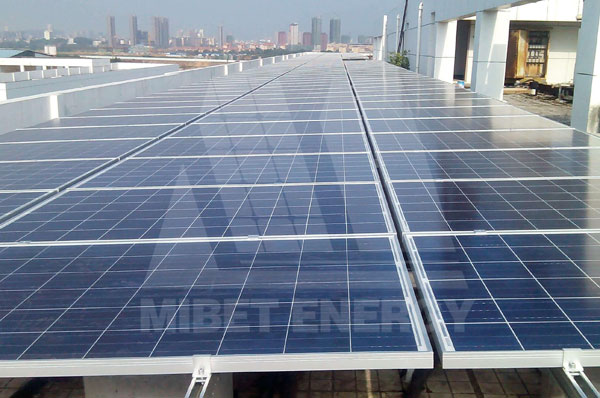The solar PV system is composed by the solar modules, solar inverter, storage and solar brackets, etc. When a solar PV system works, The PV Modules gather solar energy in the form of sunlight and convert it into direct current (DC) electricity. An inverter can convert this DC power into alternating current (AC power, which is the type of electricity used in your home). The electricity then can be on-grid and operate your appliances. Your PV power system can generate DC electricity with 12 voltage, 24 voltage and the AC electricity with 220V and 380V.

The Main Components of Solar Power System
Solar Module:
Also called solar panels, a solar module is a single photovoltaic panel that is an assembly of connected solar cells. The solar cells absorb sunlight as a source of energy to generate electricity. An array of modules are used to supply power to buildings.
Solar Controller:
A charge controller or charge regulator is basically a voltage and/or current regulator to keep batteries from overcharging. It regulates the voltage and current coming from the solar panels going to the battery. Most "12 volt" panels put out about 16 to 20 volts, so if there is no regulation the batteries will be damaged from overcharging. Most batteries need around 14 to 14.5 volts to get fully charged.
Inverter:
A solar inverter is one of the most important elements of the solar electric power system. It converts the variable direct current (DC) output of a photovoltaic (PV) solar panel into alternating 240V current (AC). This AC electricity then can be fed into your home to operate your appliances.
Energy Storage:
A device that reserves energy for later consumption that is charged by a connected solar system. The stored electricity is consumed after sundown, during energy demand peaks, or during a power outage. Most common on residential or commercial buildings.
5 Remarkable Features of Solar PV System
Highly reliable in electricity generation and can be adapted to various weather conditions.
Automatic unattended and remote monitoring.
Easy to management and maintenance, low running cost.
More than 20 years lifespan for the main components.
One investment and long-term benefits.
Different Types of Solar System
Off-Grid Solar
The off-grid solar needs a battery inverter for converting direct current voltage, a battery bank for storing surplus energy, and a generator for the backup. The off-grid solar provides electricity to the remotest of places, like the remote rural.
On-Grid Solar
On-grid solar power system is a solar power generation system where it is connected to the utility grid. The electricity produced by the system is routed to the grid from where it is used to run the various appliances. The installation of the same is also fuss-free and easy to maintain.
Distributed Solar
Distributed solar actually means distributed generation of solar power. Solar electricity produced by households using rooftop systems is referred to as 'distributed solar'. This contrasts with centralized generation where solar electricity is produced by a large plant and then distributed to consumers through a power distribution network (grid). Distributed solar will normally be produced by individual owners for their own use, but any excess power may be sold to the power company.









